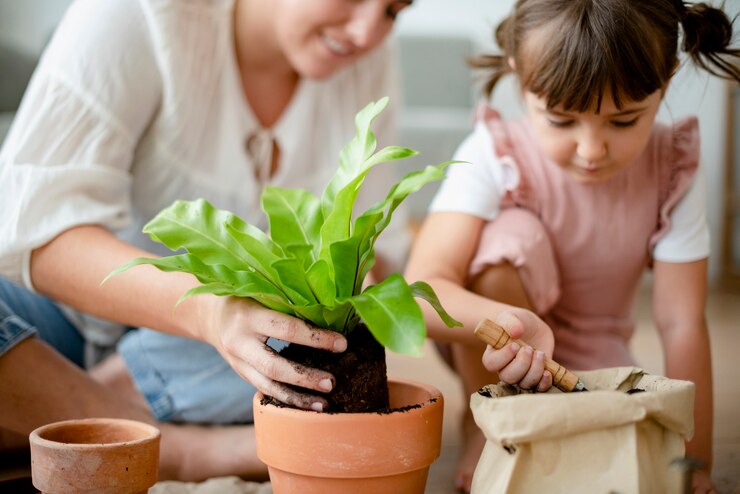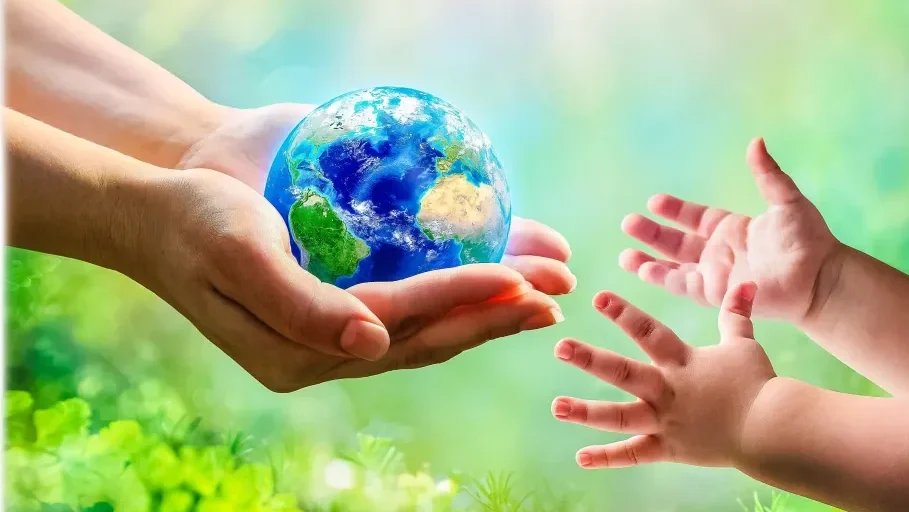The Montessori care of environment philosophy places a sturdy emphasis on fostering a feel of duty and admire for the surroundings in youngsters from a younger age. By integrating environmental care into every day sports, Montessori schooling encourages kids to expand a deep reference to nature and an expertise in their function in preserving it.
The Montessori care of environment This technique not only teaches sensible abilities however additionally instills values of sustainability and stewardship. In Montessori school rooms, kids interact in hands-on sports that promote environmental consciousness, including gardening, recycling, and nature exploration. These reviews assist them recognize the splendor and intricacies of the natural global, laying the inspiration for a lifelong commitment to worrying for the surroundings.
Through this holistic approach, Montessori schooling ambitions to cultivate environmentally aware people who are geared up to make high-quality contributions to the sector.
The Montessori care of environment
(A)CARE OF SURFACES
Example 1:WRINGING A WET CLOTH
Material
- A bowl with water or sink with water Picture 8
- A cleaning cloth
EXERCISE
The Montessori care of environment, The teacher places the cloth in the water. She takes the cloth out of the water, holding it over the sink or bowl, grasping it with two hands together. She closes both hands tightly over the cloth. Grasping the cloth tightly, she rotates her hands in the opposite direction to each other, keeping the sides of the hands touching. Most of the water is wrung out of the cloth during this action. She helps the child to wring the cloth. When the child understands the exercise, (s)he can practice.
Example 2 :WASHING A FORMICA SURFACE
MATERIAL
- A plastic bowl ⅓ full of warm soapy water picture 9
- A sponge
- A drying cloth
Exercise
The child wears a plastic apron and rolls up his sleeves. The teacher collects the materials with the child.
The Montessori care of environment, The teacher places the bowl on a chair by the table to be washed. She shows the child how to immerse the sponge in the soapy water and squeeze it out a little. She shows the child how to wash the whole surface of the table with circular arm movements, re-dipping his sponge on the soapy water as necessary until the entire surface has been washed.
She demonstrates how to wipe all around the edge of the table. The bowl is emptied at the sink and clean warm water is brought to the table. The sponge is used to rinse the table clean of all the suds, getting it as dry as possible. The table is dried with a cloth and the utensils returned to their places. The sponge is rinsed and squeezed dry. The cloth is hung up to dry.
NOTE: The small child will often wash the table a number of times before putting the materials away. His aim is to learn to do the work. This takes practice. His aim is not to get the work done quickly.
The Montessori care of environment At first, when he has finished, the teacher helps him put things away so that he understands what should be done. She looks with him to see if water has been spilled on the floor or the chair. She asks him to wipe this up, if necessary. She asks him to try not to spill water the next time he washes tables.
The teacher shows the child how to dip the sponge in the water, squeeze it as dry as possible and to wipe the soapy water off a small area of table. When the child has understood, he continues alone. She does not praise the child but sometimes it is good to make a positive comment like, “It is nice to have a clean table.”
NOTE : A child is not asked to wash his table. He may wash any table that is free. If someone else has already washed it, it does not matter. Do not point this out to him.
(B) CARE OF MATERIALS
EXAMPLE 1:POLISHING BRASS
MATERIAL
- Any brass object used in the environment
- A toothpaste containing baking soda
- Small squares of cotton or linen cloth (an old cotton sheet or something similar can be torn into approximately 3”squares which are thrown away after use)
- Small pieces of woolen type material about 6” square (also thrown away after use)
- Small dish
- Newspaper or plastic mat
Exercise
The Montessori care of environment The child can do this work on a mat which can be cleaned when they finish. The teacher shows the child how to squeeze a small amount of paste into the dish. She takes a small square of cloth and shows the child how to place it over the top of her finger and wrap it around the sides, holding it in position with the thumb and middle finger.
The Montessori care of environment The teacher dips the top of the cloth-covered finger into the dish, getting a little polish on the cloth. She rubs this hard over a small area of the brass object. She again dips into the polish and rubs the next small area of the object very hard. The teacher shows the child how to repeat the procedure.
When the child understands that the whole object must be cleaned in this way, she leaves him/her to continue.

The Montessori care of environment When the child has finished, the teacher again sits beside him/her, takes a square of woolen material and rubs one area hard. She shows the child that this spot now shines brightly.
She gives the square to the cold who rubs over the entire surface.
A large object may be cleaned one area at a time and polished before going on to the next area.
Silver tableware and other silver objects are polished in the same way, using a non-toxic cleaner. table ware is washed and dried after polishing before being put away.
Picture 13
The Montessori care of environment Both these exercises are also enjoyable when done as a group. The children cover a large table, or a few small ones with newspaper. A small dish of non-toxic paste is put between every two children. Each child has a small cloth for rubbing on the polish and a woolen one rubbing it off and shining. The teacher can be one of the group enjoying polishing brass or silver objects used in the classroom.
Example 2 :WASHING COTTON LINEN
MATERIAL
- A detergent powder, soap powder, or bar of washing soap
- Clothesline and pins
- Cotton clothes that need washing
EXERCISE
The Montessori care of environment Two sinks are half filled with warm water. The temperature depends on the type of cloth to be washed. The right amount of powder is dissolved in one sink. The article is cleaned well by rubbing two parts of the cloth against each other by hand. Care is especially taken to rub the dirty parts well.
The Montessori care of environment, In countries where a washboard is used, the cloth is rubbed up and down on the washboard. A washboard and a washing soap are then and the soap is rubbed on the cloth held against the washing board, particularly on spotted or dirty areas. This exercise is only shown in those countries; otherwise, the cloth is soaped and rubbed between the hands.
When the cloth is clean, it is rinsed well, wrung out and pinned on the line to dry, preferably in the open air. Dip dry fabrics are hung out wet.
The Montessori care of environment If it is a garment to be ironed, it is brought in and rolled up in the clothes basket while still damp. Most fabrics, however, have now been treated so that they do not require ironing. These can be left on the line till quite dry. The child can then be shown how to fold them and put them away. linen or cotton cloth can be wrung. Other types of fabrics must be squeezed dry. Wool is gently squeezed and rolled in a dry cloth. The child learns to wash different fabrics depending on what is used in the school. It is important that he realizes that different fabrics need different treatment.
The Montessori care of environment It is helpful for a child to learn how to wash by hand even though washing machines are mostly used today. There are still times when it is necessary to wash by hand. The children can also be shown how to use a washing machine.
(C) CARE OF PLANTS AND ANIMALS
EXERCISE 1 :CARE OF HOUSEPLANTS
MATERIAL
- Watering can for indoor plants
- Scissors
- Small sponge (this one kept only for washing leaves of potted plants when necessary. A dirty greasy sponge would do harm.)
- A book in the care of house plants
Exercise
The Montessori care of environment Children are shown how to water potted plants. They are also shown how to cut off dead flowers and leaves. The length of daylight required by each plant must be discussed and understood. The amount of direct light or sunlight or shade can be discussed. The food required by each plant can be discussed and provided under supervision. Drinkable foods must be kept locked and used only under supervision.

Plants grown for their greenery need to have the dust carefully wiped from the leaves with a dump sponge occasionally. With 6-9 year- olds, a child might take over the care of one plant for a period of time.
Conclusion
The Montessori care of environment In end, the Montessori technique to being concerned for the environment thru realistic existence physical games fosters a experience of duty and respect for the world around us. By attractive kids in hands-on activities such as wringing a wet fabric, washing surfaces, polishing brass, and caring for vegetation, Montessori schooling instills crucial existence skills and environmental stewardship from an early age.
These tasks aren’t simply chores; they’re opportunities for youngsters to expand concentration, coordination, and a experience of accomplishment. Each workout, from wringing a material to washing linen and sharpening brass, teaches children the price of keeping their environment and the joy of finishing meaningful work.
The care of flora and animals in addition complements their knowledge of living matters and the importance of nurturing and keeping existence. Through these practical activities, youngsters study that their moves have a direct impact on their environment, selling a sustainable and caring mind-set that they bring about with them at some stage in their lives.
